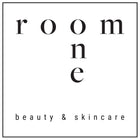Are you using hyaluronic acid serum the right way?
Are you using hyaluronic acid serum the right way?
How to effectively layer in a hyaluronic acid serum so it doesn't dry you out and tips for juicy, hydrated skin.
We all know hyaluronic acid serums are a must for dry and dehydrated skin types because it helps boost the skin's moisture retention and infuse much-needed hydration. But the way you layer your hyaluronic acid serum will directly impact whether or not it works to optimally hydrate your skin or potentially cause further dehydration. So let's break down whether or not you're using your hyaluronic acid the right way.
Hyaluronic acid is a powerful humectant that holds 1000x its weight in water, meaning it helps retain and bind moisture to the skin. So it's no surprise it's the go-to ingredient for dry skin. It's also a super ingredient for aging skin, which lacks hyaluronic acid, and it will help to plump up the skin and diminish fine lines and wrinkles. The thing is, while it is a potent hydrator, it has a naturally larger molecular size, making it harder to absorb through the skin's barrier to where it's needed most.
This is where we can run into a bit of a problem... Suppose your skin is already lacking moisture, and you apply a hyaluronic acid serum onto dry skin. In that case, it will sit at a surface level and potentially pull moisture from within the skin and dry it out further.
What's the fix? How you apply your skincare will determine how well it absorbs into the skin to maximize results. With hyaluronic acid serums, you want to help it by layering it between two other hydrating products. Think hydration sandwich.
First, you want to follow your cleanse with a pre-serum in the form of a hydrating toner, mist or essence.
If you think of the skin like a sponge, it will absorb more when it's damp versus dry. This initial step before layering serums will not only infuse an extra layer of hydration, but dampened skin will help your serums penetrate deeper, so you reap the benefits.
Next up apply your hyaluronic acid based serum. If layering multiple serums, work from thinnest to thickest consistency.
After serum application, you need to layer a moisturizer.
Remember, your hyaluronic acid serum is sandwiched between two layers of hydration, the toner and moisturizer. This step is a must for all skin types, especially if you experience dry or dehydrated skin. Your moisturizer will seal in your skincare, promote a healthy barrier, and protect against transepidermal water loss (AKA TEWL), when moisture is pulled out of the skin due to dry environments. As Canadians we are especially prone to this due to indoor heating and harsh weather conditions. If you're a dry skin type you'll want to look for a richer moisturizer or balm to really help protect and hydrate your sin's barrier.
For those struggling with dry skin, especially during winter, it may be worth trying a method called slugging.
Slugging has been around for ages, but its popularity has had a massive resurgence in the past year. It works by finishing off your skincare application by layering a pea-size amount of an occlusive product over your moisturizer (such as Vaseline). Occlusive ingredients work exceptionally well by creating a barrier on the skin to seal in skincare and moisture while also preventing TEWL. If we think back to the skin as a sponge example, this will work as a cellophane wrap around that damp sponge, and it would lock in moisture and prevent the sponge from drying out. This is a fabulous option for dry skin, especially as part of a nighttime routine, but if you're oily or acne-prone, it's not for you.
